#cucurbitaceas
Photo


Wild Cucumber
Echinocystis lobata
Cucurbitaceae
Photographs taken on October 7, 2021, along the Culham Trail, Mississauga, Ontario, Canada.
#wildflowers of southern ontario#Wild Cucumber#Echinocystis lobata#cucumber#Echinocystis#Cucurbitaceae#culham trail#mississauga#ontario#canada#fruit
71 notes
·
View notes
Video
n292_w1150 by Biodiversity Heritage Library
Via Flickr:
Flore médicale / Paris :Imprimerie de C.L.F. Panckoucke,1828-1832. biodiversitylibrary.org/page/9503681
#1833#Botany#Medical#Copper engraving#France#Graphic media :#Hand-colored#Herbals#Materia medica#Vegetable#Pictorial works#Plants#Missouri Botanical Garden#Peter H. Raven Library#bhl:page=9503681#dc:identifier=https://biodiversitylibrary.org/page/9503681#flickr#melon#Cucurbitaceae#botanical illustration#scientific illustration
2 notes
·
View notes
Text

C – Citrullus lanatus (Thunb.) Matsum. & Nakai – Anguria (Cucurbitaceae)
digital watercolor
12 notes
·
View notes
Text
Fettine di Zucca al forno e salvataggio degli "scarti"
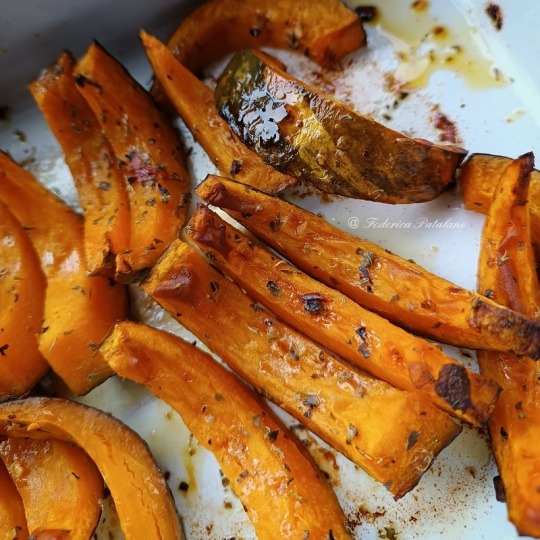
View On WordPress
#aglio#autunno#benefici#buccia#colori#colori naturali#cucina#cucurbita maxima#cucurbitaceae#estate#estrazione dei colori#forno#frutti autunnali#Lake Pigment#olio#origano#ortaggi#ortaggi con la buccia#peperoncino#pigmenti#pigmenti naturali#ricetta#sale#seedsavers#semi#zucca#zucca al forno#zucca delica
2 notes
·
View notes
Text
Chayote(Hayatouri) and its two dishes (cooking)
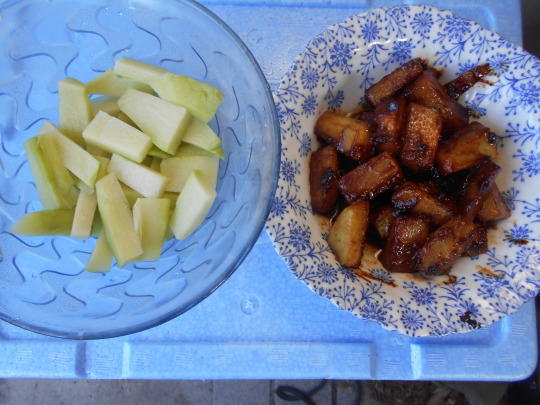
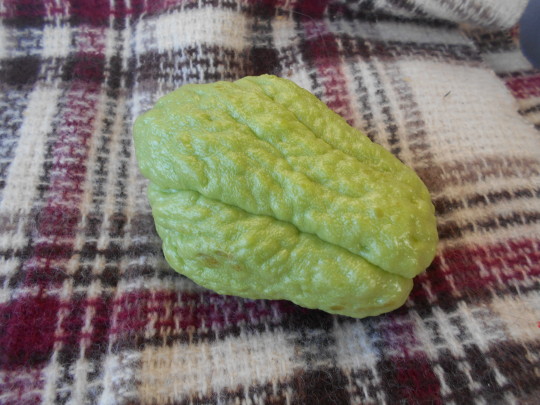
Chayote(Hayatouri), as the name suggests, belongs to the Cucurbitaceae family and is available in Japanese markets from autumn to winter. This fruit is not just a fruit, but "the whole fruit is the seed." I have never grown it, but I can imagine it being a vigorous plant.
It has a firm texture and a light taste, so it can be used in a variety of dishes, but I tried to make two dishes this time. One is "lightly pickled" using commercially available pickling liquid. It has a refreshing taste ( photo left).
The other is with a mixture of 3 seasoning : ``red miso: not the white miso that is commonly distributed in Japan, but a dark miso made by fermenting soybeans with soybean malt,'' and ``mirin: a kind of sake'' and ``vinegar'', I seasoned chayote(Hayatouri) after frying with sesame oil. (Photo right)
(2022.12.10)
ハヤトウリとその料理2品(料理)
ハヤトウリは、名前が示す通り、ウリ科の野菜で、日本では秋から冬にかけて市場にでまわる。この実はただの実ではなく、「実全体が種であり」、植え付けるときは、中の種だけでなく、実全体を植え付ける。私は栽培したことはないが、さぞや強勢な植物であることが想像できる。
歯ごたえがあり、味は淡泊なので、いろいろな料理に出来るが、私は今回2種類の料理を作ってみた。一つは、市販の漬け液を使った「浅漬け」。味がさっぱりしている(写真左)。
もう一つは、「赤味噌:日本で普通に流通する白味噌ではなく、大豆に麹を生やしたもので大豆を発酵させる黒っぽい味噌」と、「みりん」「酢」の混合液で、ごま油で炒めたハヤトウリを味付けした。(写真右)
(2022.12.10)
#Chayote#hayatouri#Cucurbitaceae#“the whole fruit is the seed.”#lightly pickled#red miso#fermenting soybeans with soybean malt#cooking#rei morishita
5 notes
·
View notes
Text
Harnessing the Nutritional Power of Cucumbers for Health and Wellness
Cucumbers have long been recognized as a refreshing addition to salads and sandwiches, but their nutritional value extends far beyond their crisp texture and mild flavor. These humble vegetables, scientifically known as Cucumis sativus, are packed with essential vitamins and minerals that offer a wide range of health benefits, making them a valuable addition to any diet.
Among the many nutrients found in cucumbers, vitamins K, B, and C stand out for their contributions to overall health and wellness. Vitamin K plays a crucial role in bone health and blood clotting, helping to maintain strong bones and prevent excessive bleeding. Meanwhile, vitamins B and C are known for their immune-boosting properties, helping the body fend off infections and illnesses.
In addition to vitamins, cucumbers are rich in minerals essential for various bodily functions. These include copper, phosphorus, potassium, and magnesium. Copper is important for the production of red blood cells and the maintenance of a healthy immune system, while phosphorus supports bone health and energy metabolism. Potassium helps regulate blood pressure and muscle function, while magnesium is involved in over 300 biochemical reactions in the body, including energy production and nerve function.
One of the most appealing aspects of cucumbers is their low calorie and high-water content. This makes them an excellent choice for those looking to maintain a healthy weight or stay hydrated, particularly during hot weather or after exercise. In fact, cucumbers are composed of about 95% water, making them one of the most hydrating vegetables available.
Beyond their nutritional value, cucumbers offer numerous culinary possibilities. They can be enjoyed fresh in salads, sandwiches, and wraps, or used as a crunchy topping for tacos and burgers. Cucumbers can also be pickled to create tangy snacks or blended into refreshing smoothies and chilled soups.
Furthermore, cucumbers have gained popularity in the world of skincare for their hydrating and soothing properties. Cucumber extract and cucumber powder are commonly used ingredients in skincare products, such as moisturizers, serums, and masks. These products help to hydrate the skin, reduce inflammation, and soothe irritation, making them particularly beneficial for sensitive or sunburned skin.
For more information visit us:
0 notes
Text
Language of Flowers: Gourd
In the language of flowers, there is a designated flower for every day of the year. That flower for today, November 22, is Gourd, which signifies unrequited affection.
Image above from Wikipedia.
Gourds belong to the family Cucurbitaceae which consists of 95 genera that include 965 species. This family includes cucumbers, squash, pumpkins, and melons. One of the earliest domesticated types of…

View On WordPress
0 notes
Text
Bottle gourd
The most essential plant is the bottle gourd vegetable plant in our day-to-day life. It is botanically Lagenaria siceraria and it belongs to the Cucurbitaceous family.In south India its commonly called as Sorakkai.

Plant description
The bottle gourd plants has commonly cultivated plants in India. Most of the Cucurbitaceae vegetable plants are annual climbing vines with wide leaves & those are edible. The fruit has various shapes. And the shape depends upon the varieties.

Most of the bottle gourd shapes are uniformly cylindrical, curved round bulbous. Lagenaria siceraria plant bears attractive white flowers & plant grows up to 4 -5 inches in diameter with large petals.
Varieties
In India, the bottle gourd plants are cultivated as essential vegetable. Popular varieties of bottle gourd are CO1, PKM 1, PLR 2, PLR 1(salad type), Pusa Megdoot, Arka Bahar, TNAU Bottle gourd Hybrid CO1 & Pusa Summer Prolific Long.

Growing Bottle gourd from seeds
Initially,sow the quality seeds directly in to the pits or raised seed beds & sprinkle water.
Seeds germinate 3 to 4 days after planting. And matured plant climbs as they are climbers
Harvesting done 2-3 months after harvesting.

Benefits
The sorakkai benefits are enormous such as
Bottle gourd contains a good amount of vitamin C, B, folate, iron, zinc & calcium.
It has contain a high amount of choline, a neurotransmitter which are good for brain function.
String music instruments made from dried bottle gourds like khanjiri,tumba, veena, & others.

Save Earth & Go Green.
Bottle gourd-Sorkkai vegetable plant.
Blog Created by: www.santhionlineplants.com
#Bottle gourd#Plant description#The bottle gourd plants has commonly cultivated plants in India. Most of the Cucurbitaceae vegetable plants are annual climbing vines with#bottle gourd plant description#Most of the bottle gourd shapes are uniformly cylindrical#curved round bulbous. Lagenaria siceraria plant bears attractive white flowers & plant grows up to 4 -5 inches in diameter with large petal#Varieties#In India#the bottle gourd plants are cultivated as essential vegetable. Popular varieties of bottle gourd are CO1#PKM 1#PLR 2#PLR 1(salad type)#Pusa Megdoot#Arka Bahar#TNAU Bottle gourd Hybrid CO1 & Pusa Summer Prolific Long.#bottle gourd varieties#Growing Bottle gourd from seeds#Initially#sow the quality seeds directly in to the pits or raised seed beds & sprinkle water.#Seeds germinate 3 to 4 days after planting. And matured plant climbs as they are climbers#Harvesting done 2-3 months after harvesting.#Bottle gourd seeds#sorakkai seeds#Season#Best season for sowing this plant is during January & July.#season for Lagenaria siceraria#Spacing#This vegetable plant spacing needs to be 30 cm x 30 cm x 30 cm at the size of 2.5*2 meters.#spacing for vegatble plant#Soil
0 notes
Text
Bottle gourd
The most essential plant is the bottle gourd vegetable plant in our day-to-day life. It is botanically Lagenaria siceraria and it belongs to the Cucurbitaceous family.In south India its commonly called as Sorakkai.The most essential plant is the bottle gourd vegetable plant in our day-to-day life. It is botanically Lagenaria siceraria and it belongs to the Cucurbitaceous family.In south India its commonly called as Sorakkai.

Plant description
The bottle gourd plants has commonly cultivated plants in India. Most of the Cucurbitaceae vegetable plants are annual climbing vines with wide leaves & those are edible. The fruit has various shapes. And the shape depends upon the varieties.

Most of the bottle gourd shapes are uniformly cylindrical, curved round bulbous. Lagenaria siceraria plant bears attractive white flowers & plant grows up to 4 -5 inches in diameter with large petals.
Varieties
In India, the bottle gourd plants are cultivated as essential vegetable. Popular varieties of bottle gourd are CO1, PKM 1, PLR 2, PLR 1(salad type), Pusa Megdoot, Arka Bahar, TNAU Bottle gourd Hybrid CO1 & Pusa Summer Prolific Long.

Growing Bottle gourd from seeds
Initially,sow the quality seeds directly in to the pits or raised seed beds & sprinkle water.
Seeds germinate 3 to 4 days after planting. And matured plant climbs as they are climbers
Harvesting done 2-3 months after harvesting.

Benefits
The sorakkai benefits are enormous such as
Bottle gourd contains a good amount of vitamin C, B, folate, iron, zinc & calcium.
It has contain a high amount of choline, a neurotransmitter which are good for brain function.
String music instruments made from dried bottle gourds like khanjiri,tumba, veena, & others.

Save Earth & Go Green.
Bottle gourd-Sorkkai vegetable plant.
Blog Created by: www.santhionlineplants.com
#Bottle gourd#Plant description#The bottle gourd plants has commonly cultivated plants in India. Most of the Cucurbitaceae vegetable plants are annual climbing vines with#bottle gourd plant description#Most of the bottle gourd shapes are uniformly cylindrical#curved round bulbous. Lagenaria siceraria plant bears attractive white flowers & plant grows up to 4 -5 inches in diameter with large petal#Varieties#In India#the bottle gourd plants are cultivated as essential vegetable. Popular varieties of bottle gourd are CO1#PKM 1#PLR 2#PLR 1(salad type)#Pusa Megdoot#Arka Bahar#TNAU Bottle gourd Hybrid CO1 & Pusa Summer Prolific Long.#bottle gourd varieties#Growing Bottle gourd from seeds#Initially#sow the quality seeds directly in to the pits or raised seed beds & sprinkle water.#Seeds germinate 3 to 4 days after planting. And matured plant climbs as they are climbers#Harvesting done 2-3 months after harvesting.#Bottle gourd seeds#sorakkai seeds#Season#Best season for sowing this plant is during January & July.#season for Lagenaria siceraria#Spacing#This vegetable plant spacing needs to be 30 cm x 30 cm x 30 cm at the size of 2.5*2 meters.#spacing for vegatble plant#Soil
1 note
·
View note
Text
Bottle gourd
The most essential plant is the bottle gourd vegetable plant in our day-to-day life. It is botanically Lagenaria siceraria and it belongs to the Cucurbitaceous family.In south India its commonly called as Sorakkai.

Plant description
The bottle gourd plants has commonly cultivated plants in India. Most of the Cucurbitaceae vegetable plants are annual climbing vines with wide leaves & those are edible. The fruit has various shapes. And the shape depends upon the varieties.

Most of the bottle gourd shapes are uniformly cylindrical, curved round bulbous. Lagenaria siceraria plant bears attractive white flowers & plant grows up to 4 -5 inches in diameter with large petals.
Varieties
In India, the bottle gourd plants are cultivated as essential vegetable. Popular varieties of bottle gourd are CO1, PKM 1, PLR 2, PLR 1(salad type), Pusa Megdoot, Arka Bahar, TNAU Bottle gourd Hybrid CO1 & Pusa Summer Prolific Long.

Growing Bottle gourd from seeds
Initially,sow the quality seeds directly in to the pits or raised seed beds & sprinkle water.
Seeds germinate 3 to 4 days after planting. And matured plant climbs as they are climbers
Harvesting done 2-3 months after harvesting.

Benefits
The sorakkai benefits are enormous such as
Bottle gourd contains a good amount of vitamin C, B, folate, iron, zinc & calcium.
It has contain a high amount of choline, a neurotransmitter which are good for brain function.
String music instruments made from dried bottle gourds like khanjiri,tumba, veena, & others.

Save Earth & Go Green.
Bottle gourd-Sorkkai vegetable plant.
Blog Created by: www.santhionlineplants.com
#Bottle gourd#The most essential plant is the bottle gourd vegetable plant in our day-to-day life. It is botanically Lagenaria siceraria and it belongs t#Plant description#The bottle gourd plants has commonly cultivated plants in India. Most of the Cucurbitaceae vegetable plants are annual climbing vines with#bottle gourd plant description#Most of the bottle gourd shapes are uniformly cylindrical#curved round bulbous. Lagenaria siceraria plant bears attractive white flowers & plant grows up to 4 -5 inches in diameter with large petal#Varieties#In India#the bottle gourd plants are cultivated as essential vegetable. Popular varieties of bottle gourd are CO1#PKM 1#PLR 2#PLR 1(salad type)#Pusa Megdoot#Arka Bahar#TNAU Bottle gourd Hybrid CO1 & Pusa Summer Prolific Long.#bottle gourd varieties#Growing Bottle gourd from seeds#Initially#sow the quality seeds directly in to the pits or raised seed beds & sprinkle water.#Seeds germinate 3 to 4 days after planting. And matured plant climbs as they are climbers#Harvesting done 2-3 months after harvesting.#Bottle gourd seeds#sorakkai seeds#Season#Best season for sowing this plant is during January & July.#season for Lagenaria siceraria#Spacing#This vegetable plant spacing needs to be 30 cm x 30 cm x 30 cm at the size of 2.5*2 meters.#spacing for vegatble plant
0 notes
Text
Bottle gourd
The most essential plant is the bottle gourd vegetable plant in our day-to-day life. It is botanically Lagenaria siceraria and it belongs to the Cucurbitaceous family.In south India its commonly called as Sorakkai.

Plant description
The bottle gourd plants has commonly cultivated plants in India. Most of the Cucurbitaceae vegetable plants are annual climbing vines with wide leaves & those are edible. The fruit has various shapes. And the shape depends upon the varieties.

Most of the bottle gourd shapes are uniformly cylindrical, curved round bulbous. Lagenaria siceraria plant bears attractive white flowers & plant grows up to 4 -5 inches in diameter with large petals.
Varieties
In India, the bottle gourd plants are cultivated as essential vegetable. Popular varieties of bottle gourd are CO1, PKM 1, PLR 2, PLR 1(salad type), Pusa Megdoot, Arka Bahar, TNAU Bottle gourd Hybrid CO1 & Pusa Summer Prolific Long.

Growing Bottle gourd from seeds
Initially,sow the quality seeds directly in to the pits or raised seed beds & sprinkle water.
Seeds germinate 3 to 4 days after planting. And matured plant climbs as they are climbers
Harvesting done 2-3 months after harvesting.

Benefits
The sorakkai benefits are enormous such as
Bottle gourd contains a good amount of vitamin C, B, folate, iron, zinc & calcium.
It has contain a high amount of choline, a neurotransmitter which are good for brain function.
String music instruments made from dried bottle gourds like khanjiri,tumba, veena, & others.

Save Earth & Go Green.
Bottle gourd-Sorkkai vegetable plant.
Blog Created by: www.santhionlineplants.com
#Bottle gourd#The most essential plant is the bottle gourd vegetable plant in our day-to-day life. It is botanically Lagenaria siceraria and it belongs t#Plant description#The bottle gourd plants has commonly cultivated plants in India. Most of the Cucurbitaceae vegetable plants are annual climbing vines with#bottle gourd plant description#Most of the bottle gourd shapes are uniformly cylindrical#curved round bulbous. Lagenaria siceraria plant bears attractive white flowers & plant grows up to 4 -5 inches in diameter with large petal#Varieties#In India#the bottle gourd plants are cultivated as essential vegetable. Popular varieties of bottle gourd are CO1#PKM 1#PLR 2#PLR 1(salad type)#Pusa Megdoot#Arka Bahar#TNAU Bottle gourd Hybrid CO1 & Pusa Summer Prolific Long.#bottle gourd varieties#Growing Bottle gourd from seeds#Initially#sow the quality seeds directly in to the pits or raised seed beds & sprinkle water.#Seeds germinate 3 to 4 days after planting. And matured plant climbs as they are climbers#Harvesting done 2-3 months after harvesting.#Bottle gourd seeds#sorakkai seeds#Season#Best season for sowing this plant is during January & July.#season for Lagenaria siceraria#Spacing#This vegetable plant spacing needs to be 30 cm x 30 cm x 30 cm at the size of 2.5*2 meters.#spacing for vegatble plant
0 notes
Photo

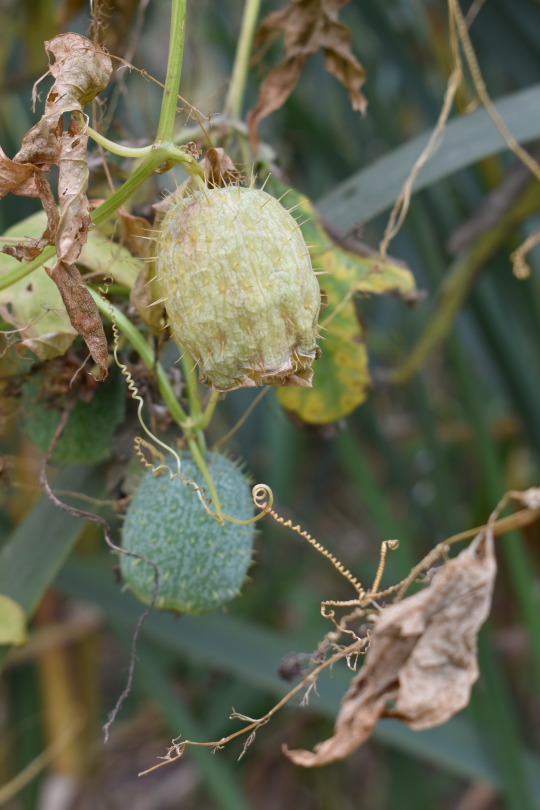

Wild Cucumber
Echinocystis lobata
Cucurbitaceae
Photographs taken on October 9, 2022, along the Etobicoke Creek, Mississauga/Etobicoke, Ontario, Canada.
7 notes
·
View notes
Text
Coltivazione della zucchetta africana (Sechium edule)
Coltivazione della zucchetta africana (Sechium edule)
Questo ortaggio è originario dell’America tropicale, ma viene ormai estesamente coltivato in diverse parti del mondo e ad esempio in alcune regioni dell’Africa, soprattutto in Abissinia; è conosciuto come zucchetta e infatti i frutti hanno un sapore simile a quello delle zucche, per quanto invece siano ben diversi per forma e aspetto esteriore. E’ una pianta vigorosissima e di rapida crescita, a…

View On WordPress
0 notes
Text




E – Ecballium elaterium (L.) A.Rich. – Cocomero asinino (Cucurbitaceae)
8 notes
·
View notes
Text
#1841 - Citrullus amarus - Pig Melon

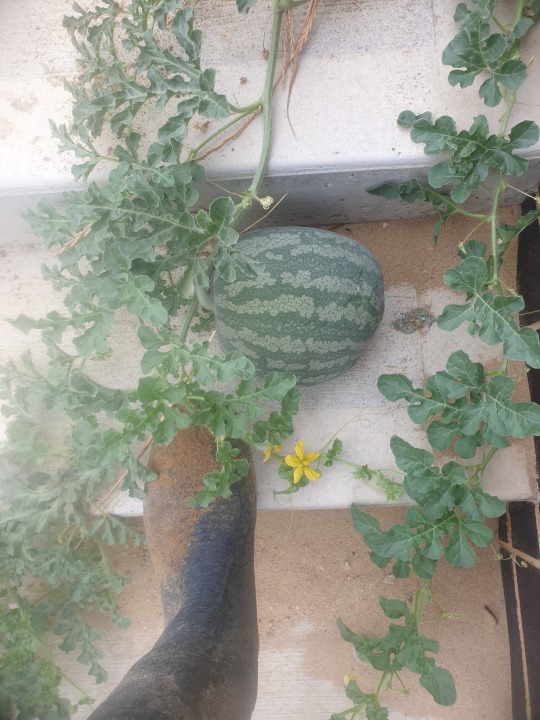
AKA Pie Melon
Despite the large size and resemblance to the watermelon Citrullus lanatus, probably not edible. Although it used to be included in the same species as the watermelon, and the taxonomy of the genus is a little annoying.
Native to the arid parts of sub-Saharan Africa, but present in Australia since at least 1836. It may have been introduced here as camel food. Now found over most of the continent.
1 note
·
View note
Photo
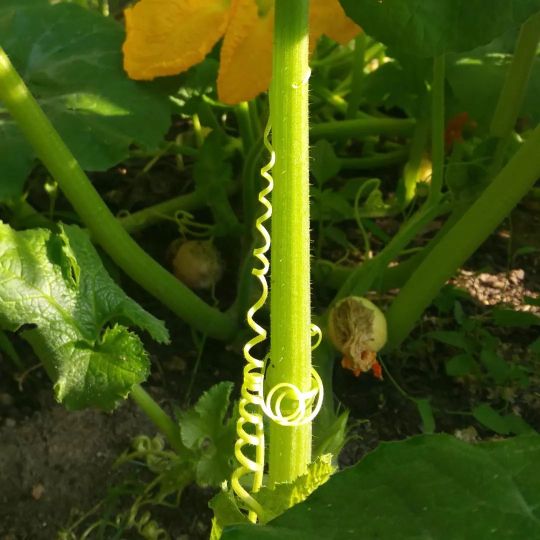
Tendrils. #cucurbitaceae #pumpkin #pumpkins #cucurbitology #zucche #moonshine #moonshinepumpkin #lamacchinafissa #associazioneculturalereadingretreatsinruralitaly #mezzogiardiniere (presso La Macchina Fissa) https://www.instagram.com/p/Ce3jKRNoTm3/?igshid=NGJjMDIxMWI=
#cucurbitaceae#pumpkin#pumpkins#cucurbitology#zucche#moonshine#moonshinepumpkin#lamacchinafissa#associazioneculturalereadingretreatsinruralitaly#mezzogiardiniere
0 notes